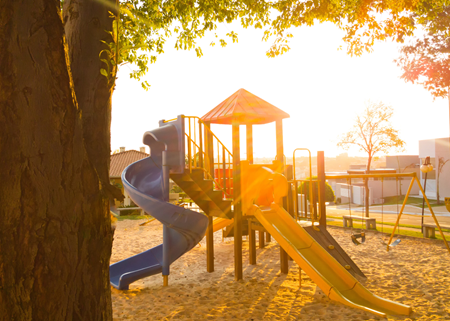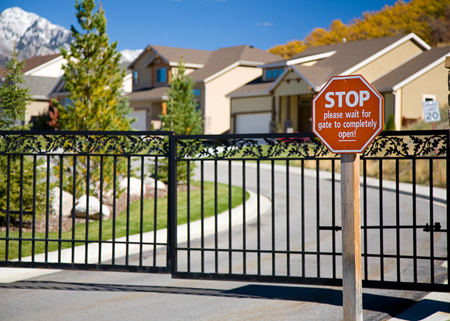Monday February 12, 2024
Texas HOA capital improvements vs capital reserve fund: An in-depth guide
 Understanding the difference between a capital reserve fund and a capital improvement fund is important for both homeowners association (HOA) board members and homeowners. Reserves and capital improvements are vital for guiding budget processes and ensuring community assets are well-managed. It's essential to budget for both and know when and how to allocate these funds for a well-maintained and continuously improved community.
Understanding the difference between a capital reserve fund and a capital improvement fund is important for both homeowners association (HOA) board members and homeowners. Reserves and capital improvements are vital for guiding budget processes and ensuring community assets are well-managed. It's essential to budget for both and know when and how to allocate these funds for a well-maintained and continuously improved community.To explain the difference between the two, we’ve put together the helpful bullet points for you below.
What’s the difference between a capital reserve fund and a capital improvement fund?
Capital reserve fund - essential savings- The HOA reserve fund is a critical savings account designed to cover the cost of significant community asset management, such as road pavement or pool resurfacing.
- This fund is dedicated to anticipated large-scale expenses and prevents the need for emergency levies or sudden increases in member dues.
- Contributions to the reserve fund are typically outlined in the HOA's bylaws and should be adjusted based on a professional reserve study.
- The HOA capital improvement fund is a substantial community enhancement that adds value to the property or extends its life. Imagine landscaping, fencing, or a new security system.
- Unlike regular maintenance, capital improvements are planned well in advance to enhance the community. This fund is for projects that require a financial commitment beyond the current operating budget.
- These improvements usually involve an increase in the asset's value and typically a separate funding stream, whether through savings or special assessments.
How can Texas HOAs use the capital reserve fund?
The capital reserve fund is based on a comprehensive reserve study. The expected lifespans of major components, as well as the costs and timing of future replacements and repairs, are meticulously assessed (see here to learn more about reserve studies and why neglecting them is a top budget blunder).Here are examples of properly allocated reserve funds:
- Major repairs and replacements: Reserve funds are typically meant for large-scale repairs, such as roofing replacements or exterior painting projects, which are essential to the integrity and value of properties.
- Road and pavement maintenance: These funds cover costs associated with the upkeep and resurfacing of roads, walkways, and other paved surfaces within the community.
- Recreational area renovations: Reserve funds can also be used to refurbish common areas, including community pools, playgrounds, or fitness centers, ensuring they remain safe and inviting for all residents.
- Critical system overhauls: This includes the necessary upgrading or replacement of mechanical systems such as HVAC units (or elevator mechanisms, if any).
- Structural integrity projects: Funds may be directed to address unforeseen structural concerns (like foundational repairs) that support the property's safety and longevity.
- Disaster preparedness: Reserved capital is crucial for readiness and repair in the aftermath of natural disasters, particularly relevant in areas prone to weather extremes like Texas.
How do Texas HOAs allocate capital improvement funds?
 Capital improvement funds play a pivotal role in enhancing property values within an HOA. For Texas communities, using these funds effectively means prioritizing projects that bring long-term value and satisfaction to homeowners.
Capital improvement funds play a pivotal role in enhancing property values within an HOA. For Texas communities, using these funds effectively means prioritizing projects that bring long-term value and satisfaction to homeowners.Here are specific examples of how these funds can be allocated:
- Infrastructure upgrades: This includes significant projects like replacing old plumbing systems, improving roads within the HOA, or installing energy-efficient lighting solutions to reduce long-term costs.
- Recreational additions: The creation of new amenities such as pools, tennis courts, or clubhouses that offer tangible enhancements to the lifestyle of residents.
- Landscaping enhancements: Capital improvement funds might be directed towards substantial landscaping projects that go beyond regular maintenance, such as the addition of park areas or community gardens.
- Security enhancements: Implementing advanced security features, from gated entryways to surveillance systems, to ensure the safety and security of the community.
- Architectural improvements: Restoring or updating community structures, including facades and signage, to modernize and uplift the overall aesthetic appeal.
What’s not covered by reserves and capital improvement funds?
 When it comes to the stewardship of financial resources within Texas HOAs, it is not only essential to understand what reserve and capital improvement funds can be used for, but also what they cannot cover. It’s important to understand the exclusions to ensure compliance with Texas laws and maintain your HOA's financial integrity.
When it comes to the stewardship of financial resources within Texas HOAs, it is not only essential to understand what reserve and capital improvement funds can be used for, but also what they cannot cover. It’s important to understand the exclusions to ensure compliance with Texas laws and maintain your HOA's financial integrity.The following do not qualify for reserve funding or capital improvements:
- Operational expenses: Routine operational costs, such as utility payments, grounds maintenance, and staff salaries, must not be drawn from reserve or capital improvement funds. These are to be covered by the regular dues collected from homeowners.
- Personal property: Funds reserved for capital improvements or maintenance should never be allocated for personal property or services that do not benefit the community at large.
- Short-term fixes: Reserve funds are earmarked for substantial, long-lived replacements, not for temporary repairs or stopgap solutions.
- Administrative costs: Reserve and capital improvement funds are restricted from use for administrative expenses like legal fees, management services, and office supplies.
- Loan repayments: These funds are not for debt servicing or for repaying loans taken out by the HOA for other purposes.
- Non-essential amenities: Voluntary additions that are not vitally necessary for property upkeep or do not enhance property values significantly are generally discouraged.
Recap: Capital Reserve Fund vs. Capital Improvement Fund
In brief, capital improvements refer to any additions or alterations that enhance the value of a property; strategic investments in the community's future.In contrast, reserve funding involves using funds from a designated reserve account for planned replacements and repairs; safeguards against unforeseen large-scale costs.
Six important points about a capital reserve fund and capital improvement fund:
- Capital improvement projects often require a higher budget allocation than reserve fund usage.
- Reserve funds are typically used for replacements or repairs that have been previously identified and planned for in advance.
- Capital improvements can increase the value of a property and attract potential buyers or tenants.
- Reserve fund usage should be based on a reserve study, which outlines the expected lifespan and replacement cost of community assets.
- It is important to prioritize capital improvement projects based on their urgency and impact on the community.
- Both capital improvements and reserve funds should be carefully managed and tracked to ensure proper allocation of funds.
Conclusion
 Navigating the complexities of capital improvements and reserve funds can (understandably) be overwhelming for many HOA board members. That’s why it’s important to have the right partner. An experienced property management partner will have the resources and financial expertise it takes to help you properly allocate your association’s reserve and capital improvement funds.
Navigating the complexities of capital improvements and reserve funds can (understandably) be overwhelming for many HOA board members. That’s why it’s important to have the right partner. An experienced property management partner will have the resources and financial expertise it takes to help you properly allocate your association’s reserve and capital improvement funds.Questions? Reach out to us today! We’ll be in touch soon.
*Note: This article was originally written as Part I of a series on this topic. Here are Part II and Part III.
FirstService Residential is simplifying property management.
Our FirstService Residential Texas family enjoys peace of mind knowing they’re in good hands. They can count on our 24/7 customer service for tailored solutions that take the balancing act out of property management. And our service-first philosophy means we don’t stop until what’s complicated becomes uncomplicated. To make life, simplified.If your association is not currently managed by FirstService Residential Texas, we would love to learn more about your community. Just click Contact Us below. We look forward to meeting you!